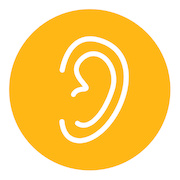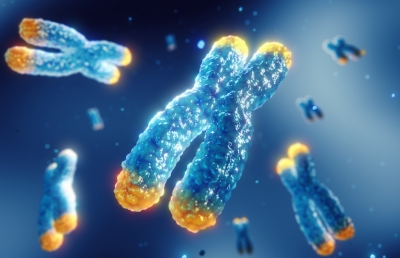Stress is an inevitable part of life. It’s as much an aspect of daily existence as, say, eating. Between work, bills, and simply existing, a little stress is bound to pop up. And there’s nothing wrong with that. When stress piles and builds, however, it can become a black hole that sucks up all of your energy.
So how can you avoid the stress spiral and keep your life as stress-free as possible?
You’ll never eliminate all of the stress from your life—instead focus on reduction and management. How can you keep your stress levels to a minimum? You’re probably familiar with the usual answers: therapy, meditation, and exercise.
But it turns out there are plenty of uncommon ways to unwind, too. And you might be doing some of them already! With just a little tweaking, and a healthy dose of intentionality, some of your daily routines can actually become some of your greatest stress-relieving tools.
Fight or Flight: The Body’s Response to Stress
When you think about stress, there’s a good chance you jump to its effect on your body: elevated heart rate, rapid breathing, and all that good stuff. These bodily responses make up a large part of “feeling stressed.”
Then, of course, there’s the mental side of stress. If something is stressing you out, it can become all-consuming—so it’s hard to think about anything else. You might feel jumpy or distracted. This can also happen as small, otherwise insignificant, stressors pile up.
These responses to stress are the result of your brain’s fight or flight response, a holdover from when humans’ main concern was survival. Basically, if your brain perceives a threat, say a wild animal, your sympathetic nervous system triggers the release of hormones that activate those familiar body functions. It’s your body’s way of preparing you to either fight off a threat or run away.
That’s great if you need to run from a bear, but here’s the problem: in the modern world, the stressors you encounter have grown more complex, while the body’s response has stayed largely the same. An elevated heart rate and rapid breathing don’t help you complete a work report on time. It’ll just make you feel even more anxious and stressed. It’s a negative feedback loop that can be difficult to escape.
The Joys of Repetition: Turning Everyday Activities Into Meditation
When it comes to escaping that feedback loop, many people turn to meditation. Most forms of meditation have one thing in common: repetition. Whether it’s repeated breath patterns, mantras, or physical motions, the consistency of these actions can help keep your mind calm and clear.
But repetition doesn’t have to come in a formal setting to be beneficial. You can take advantage of natural repetitions in your life to help you unwind. A task as simple and mundane as ironing clothes can actually help you blow off steam (pun intended). The repeated motions you make with the iron, paired with the satisfaction of pressing out wrinkles, might help you clear your mind. And a clear mind gives your brain some much needed time to rest, helping reduce your feelings of stress.
Another strange, repetition-related phenomenon is the way human brains respond to fractals. A fractal is a repeated, identical pattern that seems to go on and on. Fractals occur organically in nature, but there are plenty of man-made examples in art and architecture, too. If you’ve ever seen an illustration of the golden ratio—which occurs naturally in seashells—you’ve seen a fractal pattern.
As you look at a fractal, you might immediately notice something satisfying about it. But the effect goes deeper than that. Studies have shown that engaging with fractals for extended periods of time—and allowing yourself to get lost in their repetitions—can actually help you destress.
The first step to relaxing is usually calming your body. Think back to that negative feedback loop of stress. If you can regulate your heart rate and breathing, your brain will begin to relax, too, breaking the cycle. That’s the logic—and science—behind most of these uncommon relaxation methods. They work because they break the cycle of stress, calming either your mind or body until the other follows suit.
The Psychology of House Cleaning as a Stress Reliever
Often when the stress starts to pile up, the laundry does, too. And the dishes. And dozens of other household tasks that suddenly become too overwhelming to even think about. Here’s the good news: house cleaning, dishwashing, and other chores can actually be a great way to unwind and relieve stress. The trick is getting started.
Clutter and untidiness can affect your brain in very real, often subtle ways. Visual clutter—whether it’s dishes, unfolded laundry, or toys that need to be put away—is a constant reminder of the tasks you still have ahead of you. And that reminder can add to your stress levels whether you release it or not.
The great thing about cleaning is that you see immediate results. By simply putting a few shirts away, making the bed, or washing some dishes, you’ll feel an immediate sense of accomplishment—and this can help alleviate some of the stress in your life.
If you’ve ever worked up a sweat scrubbing your shower or vacuuming the living room, you’ve experienced another benefit of house work firsthand: it can be a great source of exercise. Physical activity is one of the greatest ways to stave off stress—and yes, that includes some of your more demanding chores. When you vacuum the house, you might accumulate the same number of steps you’d get in a short walk.
Here’s the secret about exercise: it doesn’t really matter what you’re doing, it matters that you’re moving your body. And your chores can definitely fit the bill.
Finding Mindful Moments: Uncommon Ways to Unwind Each Day
Mindfulness is a meditation practice in which participants try to live fully in the moment. The practice involves acknowledging any and all thoughts or sensations that arise without passing judgment. It’s a time to simply exist, not to worry about the stressors of life.
Sound relaxing? That’s because it is. And you don’t even have to set aside time to practice mindfulness (although that is also a great idea). Instead, you can incorporate mindfulness into your day-to-day activities, like washing the dishes. Instead of just washing the dishes, you could wash the dishes mindfully. But what exactly does that look like?
Next time you wash your dishes, try to focus on the sensations you are experiencing. What does the soap smell like? How hot is the water on your hands? Paying attention to these sensations will help ground you in the moment and can, according to some studies, help reduce nervousness and stress.
This practice isn’t limited to dishwashing. As you go about your daily life, try to identify activities that would allow you to practice mindfulness—there might be more than you expect! Some such activities include:
- Going for a walk in the park
- Petting a dog
- Taking a shower
- Climbing a tree
- Pulling weeds in the garden
- Chopping (and eating!) vegetables
- Finding clothes or household items to donate
- Mowing the lawn or raking leaves
Finding Your Weird Way to Unwind
Stress may be an inevitable part of life, but, as you’ve seen in this article, life is also full of unusual ways to unwind. You just have to find the ones that work for you. So next time you’re feeling overwhelmed, wash some dishes and try to practice mindfulness. Or maybe vacuum your apartment. You might be surprised what works for you!
References
https://www.everydayhealth.com/news/weird-ways-beat-stress/
https://www.psychologytoday.com/us/blog/changepower/201602/11-easy-and-unexpected-ways-reduce-stress
https://www.verywellmind.com/how-mental-health-and-cleaning-are-connected-5097496
https://www.vice.com/en/article/598wn8/why-cleaning-makes-some-people-feel-less-anxious
https://www.goodhousekeeping.com/health/wellness/a26898773/how-cleaning-helps-anxiety/
































